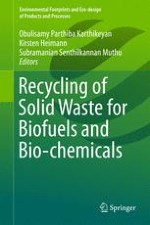2016 | Buch
Recycling of Solid Waste for Biofuels and Bio-chemicals
herausgegeben von: Obulisamy Parthiba Karthikeyan, Kirsten Heimann, Subramanian Senthilkannan Muthu
Verlag: Springer Singapore
Buchreihe : Environmental Footprints and Eco-design of Products and Processes
